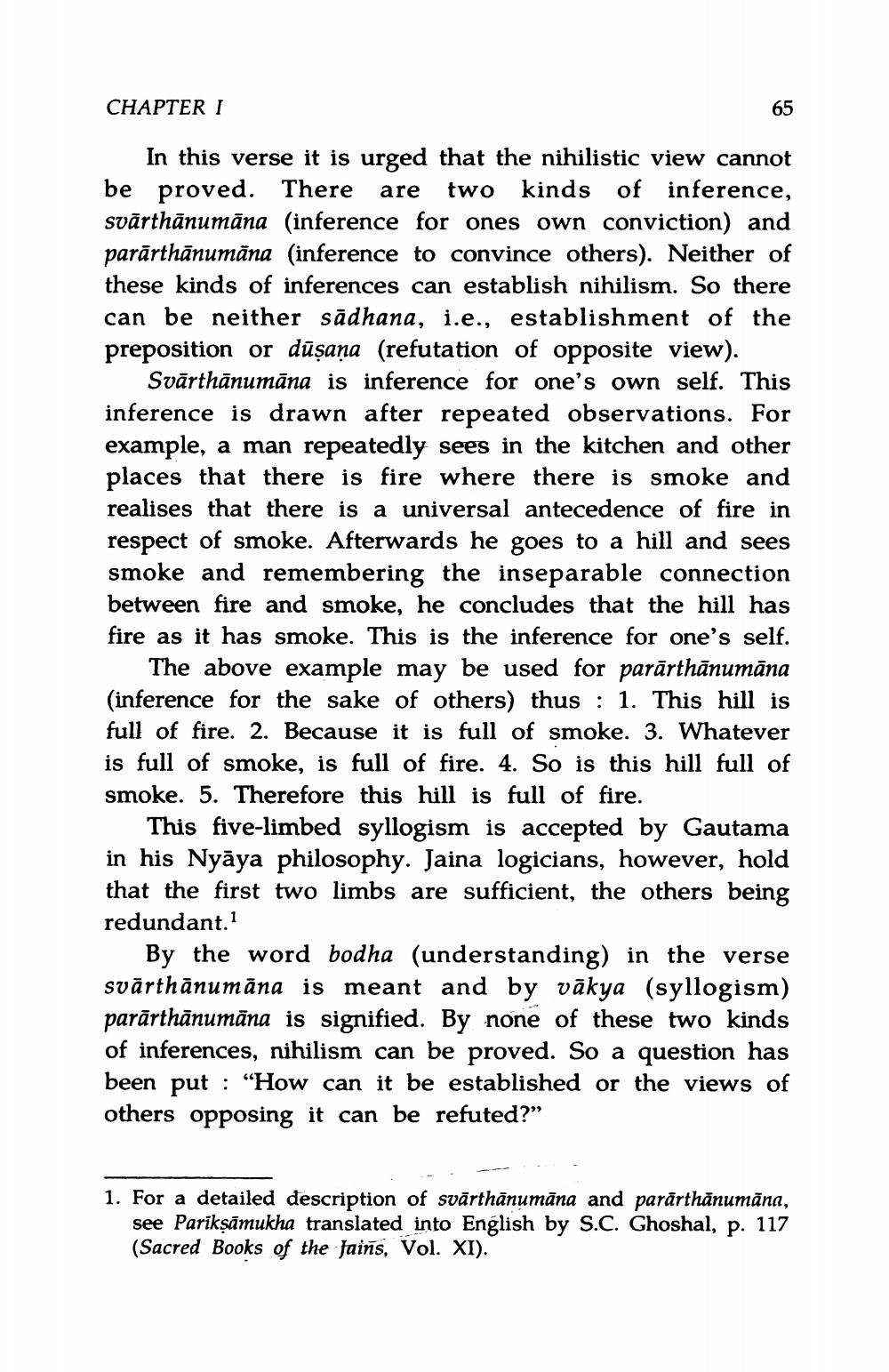________________
CHAPTER I
65
In this verse it is urged that the nihilistic view cannot be proved. There are two kinds of inference, svārthānumāna (inference for ones own conviction) and parārthānumāna (inference to convince others). Neither of these kinds of inferences can establish nihilism. So there can be neither sādhana, i.e., establishment of the preposition or dūşaņa (refutation of opposite view).
Svārthānumāna is inference for one's own self. This inference is drawn after repeated observations. For example, a man repeatedly sees in the kitchen and other places that there is fire where there is smoke and realises that there is a universal antecedence of fire in respect of smoke. Afterwards he goes to a hill and sees smoke and remembering the inseparable connection between fire and smoke, he concludes that the hill has fire as it has smoke. This is the inference for one's self.
The above example may be used for parārthānumāna (inference for the sake of others) thus : 1. This hill is full of fire. 2. Because it is full of smoke. 3. Whatever is full of smoke, is full of fire. 4. So is this hill full of smoke. 5. Therefore this hill is full of fire.
This five-limbed syllogism is accepted by Gautama in his Nyāya philosophy. Jaina logicians, however, hold that the first two limbs are sufficient, the others being redundant.1
By the word bodha (understanding) in the verse svārthānumāna is meant and by vākya (syllogism) parārthānumāna is signified. By none of these two kinds of inferences, nihilism can be proved. So a question has been put : “How can it be established or the views of others opposing it can be refuted?”
1. For a detailed description of svārthānumāna and parārthănumăna,
see Parikṣāmukha translated into English by S.C. Ghoshal, p. 117 (Sacred Books of the Jains, Vol. XI).




